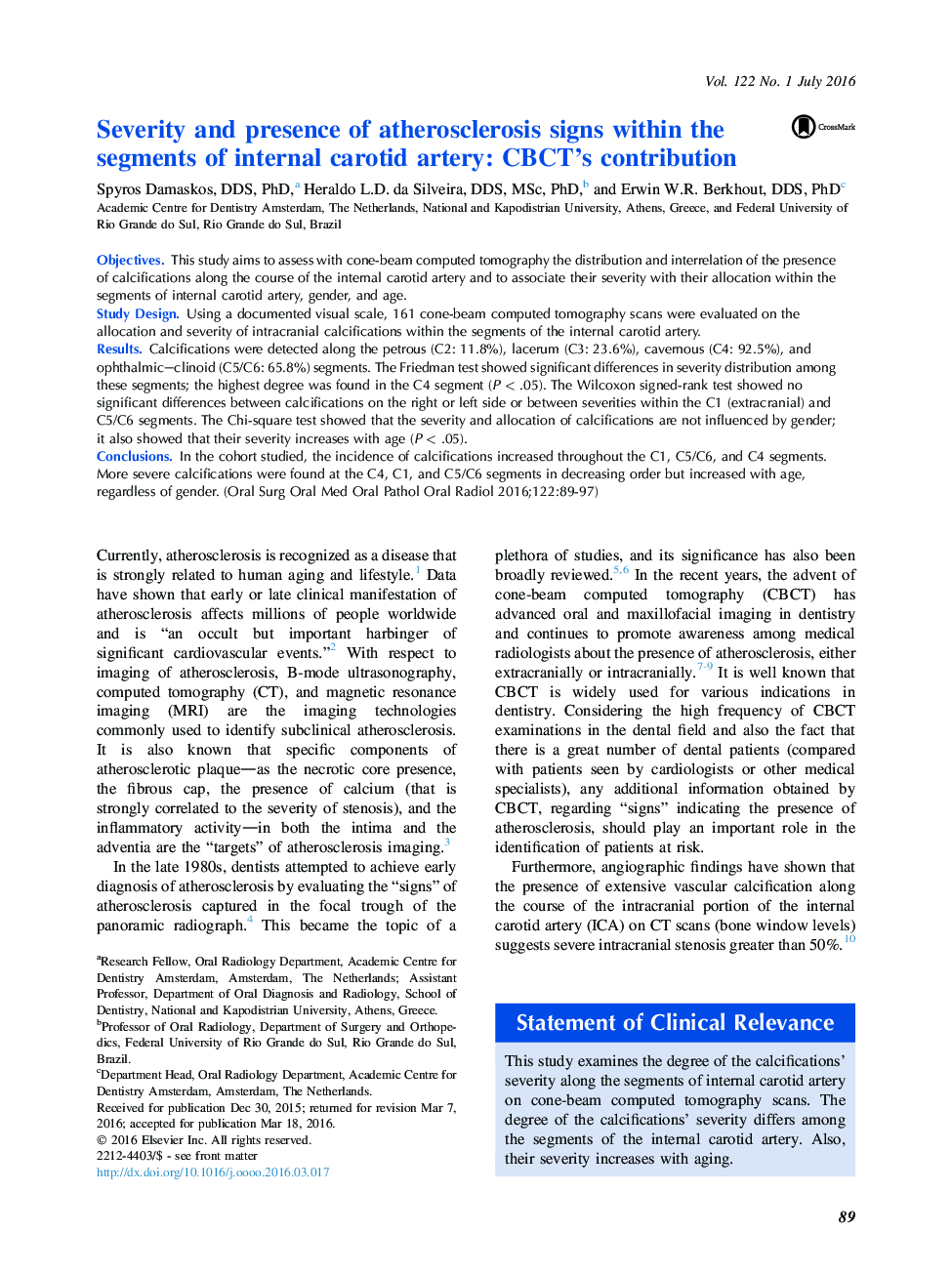| Article ID | Journal | Published Year | Pages | File Type |
|---|---|---|---|---|
| 3166504 | Oral Surgery, Oral Medicine, Oral Pathology and Oral Radiology | 2016 | 9 Pages |
ObjectivesThis study aims to assess with cone-beam computed tomography the distribution and interrelation of the presence of calcifications along the course of the internal carotid artery and to associate their severity with their allocation within the segments of internal carotid artery, gender, and age.Study DesignUsing a documented visual scale, 161 cone-beam computed tomography scans were evaluated on the allocation and severity of intracranial calcifications within the segments of the internal carotid artery.ResultsCalcifications were detected along the petrous (C2: 11.8%), lacerum (C3: 23.6%), cavernous (C4: 92.5%), and ophthalmic–clinoid (C5/C6: 65.8%) segments. The Friedman test showed significant differences in severity distribution among these segments; the highest degree was found in the C4 segment (P < .05). The Wilcoxon signed-rank test showed no significant differences between calcifications on the right or left side or between severities within the C1 (extracranial) and C5/C6 segments. The Chi-square test showed that the severity and allocation of calcifications are not influenced by gender; it also showed that their severity increases with age (P < .05).ConclusionsIn the cohort studied, the incidence of calcifications increased throughout the C1, C5/C6, and C4 segments. More severe calcifications were found at the C4, C1, and C5/C6 segments in decreasing order but increased with age, regardless of gender.
